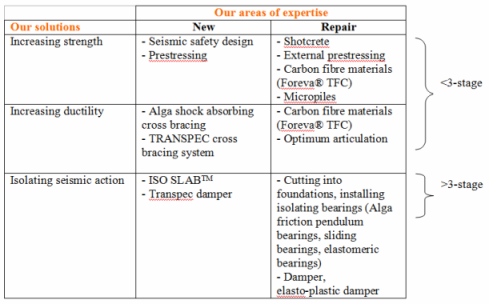Although we cannot change seismic hazard, in other words the magnitude and occurrence of earthquakes, we can however increase a structure’s resistance/resilience and so reduce seismic risk through preventive measures.
How structures respond Buildings do not all respond to earthquakes in the same way and their structural and architectural design influences how they are affected. The structures act as oscillators which amplify or reduce ground movements to varying degrees.
Structure types In terms of building structures, two main types emerge: portal frame construction with brick infill, and concrete or brick shell construction. In an earthquake, these two types respond differently: portal frame types are flexible and behave with a flexural tendency, whereas concrete or masonry structures are more subject to shear stress, especially in the case of low buildings.
Fragility – evenness Good architectural design aims for: non-resonance of the structure with the oscillations of the ground, elimination of torsional phenomena, minimising stress concentrations (uneven loads), continuous mass distribution, bracing elements distributed in a way appropriate to mass distribution, etc.
Seismic repair and reinforcement strategies There are three main operational methods, once the fragility and evenness factors of the building have been dealt with: – Increasing ductility (for example, carbon fibre jacketing of columns) – Increasing strength (for example, use of shotcrete) – Reducing seismic action (for example, Transpec® damper or use of bearing systems to isolate from the ground)
Freyssinet operates in all the following fields:

